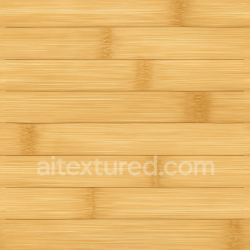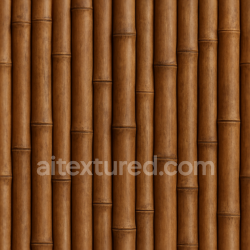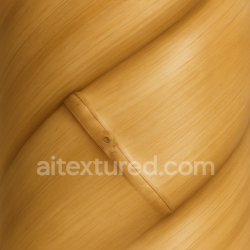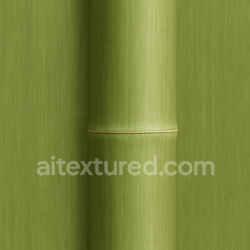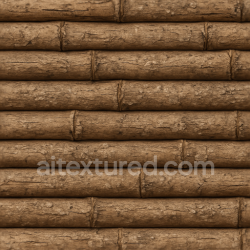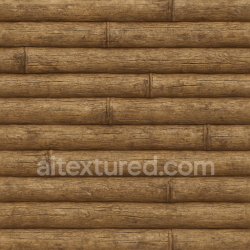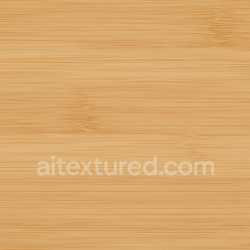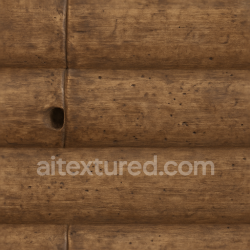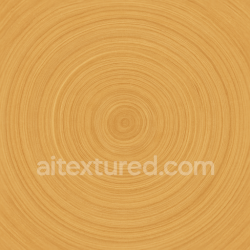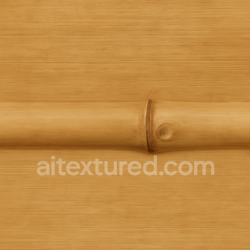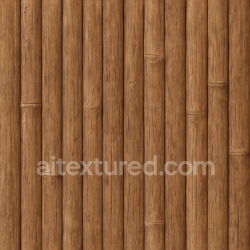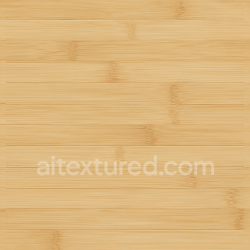Comprehensive Guide to Seamless PBR Wool Textures for Realistic 3D Design
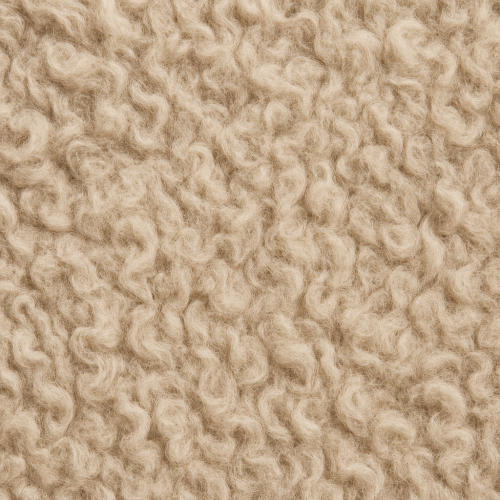
Capturing high-fidelity wool textures for physically based rendering (PBR) workflows demands a nuanced approach that accounts for the unique structural and optical characteristics of wool fibers. Wool’s intrinsic complexity—marked by its soft pile, tightly crimped fiber morphology, and subtle translucency—requires acquisition techniques that preserve these details across albedo, roughness, normal, ambient occlusion (AO), height, and, where relevant, metallic maps. Among the most effective methods are photogrammetry and high-resolution scanning, each bringing distinct advantages and challenges when applied to wool’s fibrous surfaces.
Photogrammetry, leveraging multi-angle high-resolution photography, is widely adopted for its accessibility and ability to capture real-world color nuances and microvariations inherent in natural wool. However, the softness and fine-scale crimp of wool fibers introduce specific difficulties during image capture. The pile’s interaction with light results in complex scattering behaviors, including subtle translucency and anisotropic reflections, which standard photogrammetric pipelines struggle to represent accurately. To mitigate this, it’s essential to control lighting rigorously during acquisition. Utilizing diffuse, softbox-style lighting setups minimizes harsh specular highlights and glare that can obscure fiber details or lead to erroneous normal and roughness estimations. Supplementing this with cross-polarized lighting filters helps reduce surface reflections, unveiling the true albedo of the wool fibers without contamination from reflective artifacts.
Capturing the crimp and fiber interlocking that define wool’s tactile softness requires extremely high image resolution with tight camera baselines, often employing macro lenses or specialized extension tubes. This enables the photogrammetry software to reconstruct the subtle undulations and pile density variations necessary for accurate normal and height map extraction. It is critical to maintain consistent focus and aperture settings (typically f/8–f/11 to balance depth of field and sharpness) to ensure fiber detail remains coherent across image sets. The resulting dense point clouds or textured meshes can then be processed with custom baking workflows to generate crisp normal maps that reflect the microgeometry of individual fibers and their arrangement. When generating roughness maps, the spatial variation in fiber reflectivity—ranging from matte, fuzz-covered regions to slightly glossy fiber tips—should be preserved by sampling from the captured images or by applying procedural noise modulated by the fiber structure.
High-resolution scanning, particularly via structured light scanners or laser line scanners, offers an alternative route focused on geometry acquisition. These scanners excel at delineating the topography of pile and crimp with sub-millimeter precision, often surpassing photogrammetry’s depth accuracy. While these methods typically do not capture color information as effectively, they provide invaluable height and normal data that can be integrated into PBR texture sets. The key challenge with scanning wool lies in the fiber translucency and the soft, low-contrast surface, which can confuse the scanner’s sensors and lead to noisy or incomplete data. Pre-treatment of the sample—such as lightly dusting it with a removable, fine matte powder—can enhance scan fidelity by increasing surface contrast without permanently altering the fiber appearance.
Calibration between photogrammetric color data and scanned geometry is essential. Aligning the high-fidelity normal and height maps derived from scanning with the albedo and roughness maps from photogrammetry ensures that the final PBR materials accurately reflect both the optical and geometric complexity of wool. This combined approach also facilitates the creation of tileable textures when working with swatches of wool fabric, enabling seamless repetition in engines like Unreal Engine or Blender’s shader editor without visible seams or pattern artifacts. Careful edge blending and micro-variation injection—such as subtle noise overlays or fiber direction perturbations—help avoid unnatural uniformity in tiled textures, maintaining realism.
A particular consideration during acquisition is the translucency of wool fibers, which causes subsurface scattering effects that standard PBR texture maps do not fully capture. While traditional PBR workflows do not directly encode subsurface scattering into texture maps, capturing the interplay of light within the fiber bundles through careful lighting and exposure can indirectly inform roughness and albedo variations. For real-time engines like Unreal Engine, integrating subsurface scattering shaders and using the captured albedo and roughness maps as inputs enables a more realistic rendering of wool’s soft translucency and diffuse glow. In offline renderers or Blender’s Cycles renderer, texture maps should be calibrated to complement volumetric or subsurface scattering shaders, ensuring that the acquired color and microdetail align with the physical light transport properties of wool.
Ambient occlusion maps, often baked from high-resolution geometry, play a crucial role in accentuating the depth and density of the wool pile. The complex interstices between fibers create natural shadowing that enhances realism. When generating AO maps, it is vital to capture these subtle shadowed areas without over-darkening, which can flatten the perception of softness. Multi-scale AO baking that considers both macro folds in the fabric and micro fiber clumps yields superior results. Height maps derived from scanning or photogrammetric depth data can be employed not only for parallax occlusion mapping but also to drive normal map generation, ensuring consistent surface detail that responds accurately to dynamic lighting.
Optimization for engine usage begins with careful texture resolution management. Wool’s intricate fiber detail benefits from high-resolution maps—often exceeding 4K—especially for close-up shots or characters with visible wool garments. However, tiling strategies and procedural detail layering allow artists to reduce memory footprints while preserving visual fidelity. For example, base color and roughness maps can be baked into tileable textures, while normal and height maps incorporate baked fiber detail supplemented with procedural noise for enhanced micro-variation. This approach balances performance and visual complexity, critical for real-time applications.
In summary, acquiring high-fidelity wool textures for PBR workflows involves a synergy of photogrammetry and high-resolution scanning techniques tailored to address the soft, crimped, and translucent nature of wool fibers. Meticulous lighting control, calibration between color and geometry datasets, and thoughtful map baking strategies are imperative to capture and reproduce the material’s unique microstructure and optical response. When combined with appropriate shading models and optimization practices, these acquisition methods enable the creation of authentic, physically plausible wool materials suitable for diverse 3D applications, from interactive real-time engines to photorealistic offline renders.
Creating realistic wool materials in physically based rendering (PBR) workflows demands a nuanced approach to texture authoring, particularly when leveraging procedural generation alongside photographic references. Wool’s inherent complexity arises from its fibrous structure, subtle fuzziness, and natural color variations spanning cream, beige, and brown tones. Accurately capturing these characteristics ensures the final shader responds predictably under varied lighting, maintains seamless tiling, and offers flexibility for customization. This section delves into key methodologies for authoring wool textures with a focus on PBR channels—albedo, roughness, normal, ambient occlusion (AO), height, and metallic—while addressing calibration, optimization, and integration within engines such as Unreal Engine and Blender.
When starting with procedural generation, the challenge is to simulate the micro-geometry of wool fibers and the soft, fuzzy silhouette that defines wool’s tactile quality. Procedural techniques benefit from the ability to create tileable, resolution-independent textures that can be easily tweaked for color and surface variation. A common approach involves layering multiple noise functions—Perlin, Worley, or Gabor noise—to emulate the random orientation and density of fibers. One can generate a base fiber pattern in the height map channel by using anisotropic noise filtered along a dominant fiber direction, which helps define the subtle surface undulations and the volume perceived in close-up renders. This height map can then be input into a normal map generator, often through a Sobel or similar filter, to produce a normal map that captures fine surface detail without harsh edges.
Albedo generation procedurally for wool requires careful modulation of hue and saturation to mimic natural color shifts seen in real wool. Instead of flat cream or beige tones, subtle variations in color temperature and value should be embedded. This can be achieved by using layered gradient noise or cellular noise with color ramps calibrated to cream, beige, and brown palettes. It is critical to avoid overly uniform coloration; micro-variation is essential for breaking up large flat areas, which otherwise appear artificial. Artists often employ low-frequency noise modulated with higher-frequency detail to recreate the mottled appearance of wool. Additionally, simulating slight translucency or subsurface scattering effects through albedo variation can enhance realism—a feature that can be baked into the base color texture or handled separately in the shader using subsurface scattering parameters.
Roughness maps for wool textures usually exhibit a high average roughness value, reflecting the diffuse, matte nature of wool fibers. However, procedural roughness generation benefits from incorporating subtle noise to simulate the micro-roughness variations caused by fiber orientation and wear. A base roughness value around 0.7 to 0.9 is typical, but adding low amplitude, high-frequency noise can help avoid a plasticky or uniform sheen. When authoring procedurally, roughness can be linked to the height map or normal intensity to maintain consistency between perceived surface detail and reflectivity. For example, areas with denser fiber clusters might exhibit slightly lower roughness due to compactness, while looser, fuzzier regions maintain higher roughness.
Ambient occlusion (AO) is critical for enhancing depth perception and emphasizing fiber bundles and folds in wool geometry. Procedural AO maps can be approximated by combining curvature maps derived from the height data with ambient occlusion algorithms such as ray-marching or screen-space approximations in real-time engines. While procedural AO might lack the fidelity of baked maps from high-poly geometry, layering it with other texture channels can yield convincing results for mid-range detail. When integrating into engines like Unreal Engine, it is common to multiply AO maps with the albedo or ambient lighting inputs to enhance shadowing effects. Procedural AO should be calibrated carefully to avoid excessive darkening, which can flatten the perceived volume of wool.
Photographic authoring of wool textures complements procedural methods by providing high-fidelity base color and detail information directly from real-world samples. Properly captured photographs of wool fabrics under diffuse lighting conditions yield a strong foundation for albedo maps. Key considerations include using a calibrated camera setup with color charts to ensure accurate color reproduction, capturing multiple angles to account for anisotropic fiber reflections, and employing polarized filters to minimize specular highlights that can contaminate albedo data. Once acquired, photographs require post-processing to remove shadows and specular artifacts through techniques such as high-pass filtering or color space adjustments (e.g., linearization and gamma correction). The resulting images can then be tiled by carefully aligning pattern repeats and using seamless clone or offset tools to avoid visible seams.
To recreate fuzziness in photographic textures, artists often extract detail maps from the source images. Height maps are generated using methods like photogrammetry displacement extraction or edge detection filters tuned to highlight fine fiber edges. These height maps feed into normal map generation pipelines, creating detailed normal maps that emphasize the directional fiber structure. It is crucial to avoid overly sharp normal details that contradict wool’s soft appearance; therefore, blurring or smoothing filters tuned to preserve directional anisotropy without introducing harshness are applied.
When handling roughness derived from photographs, direct capture is challenging. Instead, roughness maps are often hand-painted or procedurally generated to match the captured albedo. One effective technique involves analyzing the luminance variance in the albedo: areas with brighter, smoother fibers may exhibit lower roughness, while darker, fuzzier regions correspond to higher roughness. This approach can be combined with manual touch-ups to ensure consistency across the texture. Metallic maps are generally unnecessary for wool, as natural fibers are non-metallic; thus, this channel is typically set to black or ignored.
Ambient occlusion baked from high-resolution meshes of wool cloth or approximated from the photographic data enhances realism. Baking AO in applications like Blender using the Cycles renderer or in Unreal Engine through mesh baking tools integrates geometric shadowing cues that cannot be captured procedurally. Height maps derived from photogrammetry or displacement painting provide additional depth cues that improve parallax and tessellation effects within the engine, crucial for close-up shots where the wool’s fiber structure is visible.
Tiling considerations for both procedural and photographic wool textures are paramount to prevent visible repetition, which can break immersion. Procedural textures, by nature, offer infinite resolution and seamlessness if generated with tileable noise functions and carefully layered patterns. Adjusting the scale and rotation of noise layers can help mitigate recognizable repeats. For photographic textures, seamless tiling requires meticulous edge blending and pattern analysis to ensure the fiber structures align across borders. Tools such as Substance Designer and Quixel Mixer offer advanced blending and cloning features to assist in this process, but manual intervention often remains necessary.
Calibration between channels is essential for physically accurate wool materials. Ensuring that the albedo base color corresponds appropriately with the roughness and normal maps maintains energy conservation principles. For example, a bright cream-colored wool should not have an excessively low roughness map, which would produce unrealistic specular highlights. Similarly, normal maps derived from height data must maintain subtlety to avoid conflicting with the diffuse scattering expected from wool fibers. Artists typically perform iterative tests within the target engine, adjusting texture intensities and shader parameters to achieve a balanced look.
Optimization strategies are vital for maintaining performance without sacrificing visual quality. Given that wool textures often require high-resolution detail to capture fine fibers, artists employ mipmapping and anisotropic filtering techniques within engines like Unreal Engine to retain detail at oblique viewing angles while minimizing aliasing. Using texture compression formats optimized for the platform (such as BC7 for desktop or ASTC for mobile) preserves color fidelity in albedo maps and smooth gradients in roughness and normal maps. Additionally, generating lower resolution LOD variants and combining detail normal maps for micro-fiber effects with macro normal maps for fabric folds helps balance quality and performance.
In practical engine usage, Blender’s shader editor facilitates prototyping wool materials by combining image textures with procedural noise nodes, enabling rapid iteration of fiber density, color variation, and surface roughness. The Principled BSDF shader’s subsurface scattering parameters can simulate the soft light diffusion through wool fibers, adding realism beyond standard diffuse reflection. Unreal Engine’s Material Editor allows for complex layering of textures and procedural noise functions via material functions and parameters, providing artists with control over fiber directionality, fuzz density, and color shifts in real time. Employing dynamic parameters and vertex painting for localized variation further enhances the authenticity of wool surfaces in interactive environments.
Ultimately, the combined use of procedural and photographic authoring techniques offers a comprehensive toolkit for creating high-quality, customizable wool PBR textures. Procedural methods provide flexibility, seamless tiling, and easy parameterization, while photographic sources ground the material in accurate natural color and detail. Proper calibration, micro-variation, and optimization ensure these textures perform reliably across rendering pipelines and real-time engines, enabling artists to achieve convincing wool materials that respond faithfully to lighting and viewing conditions.
Wool, as a material, presents a distinctive challenge to physically based rendering workflows due to its intricate fiber structure, subtle micro-variations, and the interplay of softness and depth inherent to its tactile nature. Accurately capturing this complexity requires a deliberate approach to creating and optimizing PBR texture maps—primarily albedo, roughness, normal, and height maps—that faithfully reproduce wool’s visual and tactile qualities while maintaining efficient performance in real-time engines such as Unreal Engine or Blender’s Eevee and Cycles renderers.
The albedo map for wool must convey the diffuse coloration of the fibers without introducing artificial shading or reflectance cues. Wool’s base color often exhibits subtle tonal variation due to fiber density, natural pigmentation, and slight fuzziness. To author an effective albedo, begin with high-resolution photographic references or scans that capture these variations but are carefully desaturated of any baked lighting or shadows. This can be achieved through calibrated image processing techniques such as neutralizing shadows and highlights using high dynamic range (HDR) imaging or multichannel image fusion. Since wool fibers are translucent and scatter light internally, the albedo should reflect a somewhat muted, soft color palette rather than saturated or overly bright hues. When hand-painting, use a brush workflow that incorporates micro-variation in hue and value to simulate fiber clusters and subtle color shifts, avoiding uniform flatness. For tiling, ensure that the albedo texture is seamless and incorporates randomized fiber clumping effects to prevent obvious repetition patterns; this can be enhanced with the use of procedural noise masks or detail overlays.
Roughness maps are critical in representing the unique light scattering behavior on wool surfaces. Unlike hard materials, wool fibers scatter light diffusely but also exhibit localized specular highlights due to the smooth surface of individual fibers and their alignment. The challenge lies in balancing roughness values to simulate this semi-matte finish without making the material appear plasticky or overly glossy. Typically, wool exhibits mid to high roughness values (generally between 0.6 and 0.9 on a normalized scale) with localized micro-variation to represent the uneven fiber orientation and density. Creating a roughness map involves starting with a grayscale base derived from the albedo texture’s luminance or an ambient occlusion pass, then layering procedural noise or hand-painted detail to break uniformity. Calibration is essential: roughness values should be tested in the target engine’s lighting environment using a physically plausible BRDF to confirm that highlights are soft and diffuse, with no harsh reflections. In Unreal Engine, for example, use the Roughness input in the Material Editor and preview with dynamic lighting setups and reflection captures to verify the subtle specular interplay. Adjusting the roughness map’s contrast can control the perceived softness or crispness of the fibers.
Normal maps for wool must replicate the fine microstructure of fiber bundles and surface irregularities that contribute to tactile perception and light interaction. Unlike smooth surfaces, wool contains intricate microscopic undulations and directional fiber patterns. Creating accurate normal maps can be approached through several methods: scanning high-resolution displacement data from fiber-rich wool samples, baking from high-poly fiber simulations, or synthesizing via procedural texturing software like Substance Designer. Regardless of the source, the normal map should encode subtle directional changes without introducing excessive sharpness or noise that would contradict wool’s soft appearance. Consider generating multi-scale normal maps that combine a macro-scale fiber orientation with micro-scale surface roughness details. This can be achieved by blending a low-frequency normal map representing fiber flow with a high-frequency detail normal generated procedurally. When authoring these maps, care must be taken to maintain correct tangent space orientation and to avoid artifacts such as seams or stretching, which are particularly noticeable on curved geometry like garments. In Blender or Unreal Engine, preview the normal maps using the viewport’s normal visualization mode and under varied lighting angles to ensure the fiber directionality reads convincingly.
Height maps (or displacement maps) serve a complementary role by providing depth cues that enhance the perception of wool’s fibrous surface. While normal maps simulate surface detail via lighting perturbation, height maps allow actual geometry displacement or parallax effects that increase realism, especially at grazing angles. The challenge with wool is representing the soft, uneven pile without producing hard-edged or overly sharp displacement. Height maps should be authored with smooth, low-amplitude variations that correspond to fiber clumps and surface fuzz. These can be extracted from high-resolution scans or sculpted in digital painting tools with soft brushes to mimic the fluffy surface. In real-time engines, height maps are often used in parallax occlusion mapping or tessellation schemes; thus, it is vital to calibrate their values to avoid excessive displacement that causes silhouette artifacts or performance degradation. For instance, in Unreal Engine, use the height map in conjunction with a parallax occlusion node, and adjust the height scale parameter carefully to preserve subtlety. In Blender, displacement modifiers combined with adaptive subdivision can leverage these maps effectively, but again, the values must be constrained to prevent mesh distortion.
Ambient occlusion (AO) maps, though not always mandatory, enhance the perception of depth and fiber clustering in wool by darkening crevices and dense fiber intersections. When baking AO for wool, ensure that the occlusion is subtle and fine-grained, as exaggerated shadows can flatten the soft appearance. AO maps may be combined multiplicatively with the albedo or roughness maps in shaders to increase contrast and realism. Metallic maps are typically not applicable for wool since it is a non-metallic organic material; thus, the metallic channel should remain zeroed or omitted to maintain correct energy conservation in the shading model.
An essential aspect of optimizing wool PBR textures is balancing map resolution, detail fidelity, and performance. Wool materials often require relatively high-resolution maps (2048x2048 or greater) to capture fine fiber details, especially when viewed up close. However, such resolutions can be prohibitive in real-time contexts. To mitigate this, employ tiling textures with randomized or masked detail overlays to break repetition and add micro-variation without increasing resolution. Utilize mipmapping and anisotropic filtering settings in the target engine to preserve sharpness at oblique angles while reducing aliasing. Additionally, consider generating detail maps—small-scale normal or roughness textures—that can be overlaid on the base maps to simulate fiber fuzz and surface irregularities without full-resolution texture cost.
Calibration of these maps within the rendering engine is paramount. Wool’s appearance is highly sensitive to lighting conditions and shader parameters such as subsurface scattering (SSS) settings or translucency, given that real fibers scatter light internally. While classical PBR workflows do not account for volumetric scattering, modern engines like Unreal Engine support subsurface or subsurface profile shading that should be leveraged to approximate wool’s semi-translucent quality. Adjust SSS radius and color parameters carefully in tandem with the albedo and roughness maps to simulate the soft light diffusion characteristic of wool. Testing the material under a variety of lighting environments—including daylight, indoor tungsten, and HDRI reflections—ensures the textures and shader parameters hold up consistently.
In practice, a recommended workflow begins with high-fidelity scans or photographs of wool samples, followed by careful extraction of albedo devoid of baked lighting. Next, procedural or hand-painted roughness maps introduce micro-roughness variations, while normal maps are generated or synthesized to encode multi-scale fiber directionality. Height maps are then sculpted or derived to add subtle depth cues, and AO maps are baked with careful control of occlusion strength. All these maps should be tiled seamlessly with randomized detail channels to avoid pattern repetition, and their resolutions balanced to the target engine’s performance budget. Finally, shader calibration within Unreal Engine or Blender must include testing roughness, normal intensity, height displacement scale, and subsurface scattering parameters to achieve a visually convincing wool material.
In summary, the key to mastering wool PBR texturing lies in harnessing high-quality input data, employing multi-scale detail encoding, and performing iterative calibration within rendering engines. By respecting the unique optical and structural properties of wool fibers—namely their soft, diffuse reflectance, complex fiber orientation, and subtle depth variations—artists can create materials that evoke tactile realism without compromising real-time efficiency.
